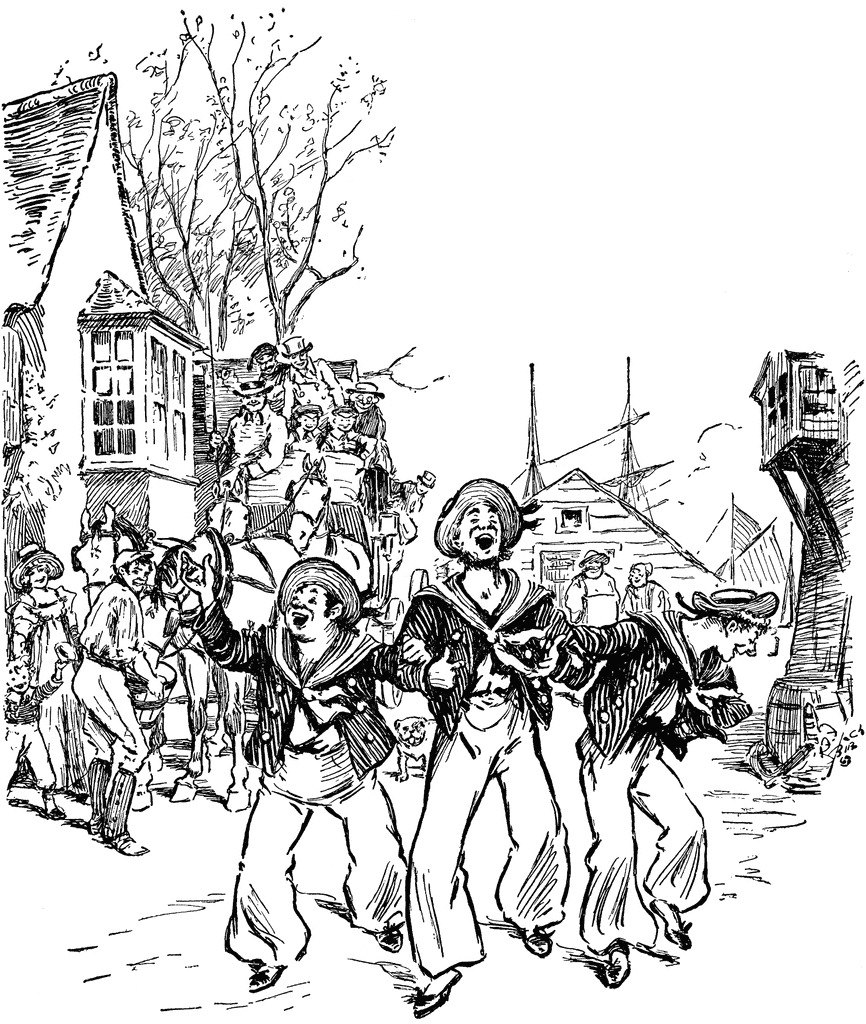Sing a chantey
Learn and perform a traditional sea chantey with friends, practicing call-and-response, rhythm, and simple harmonies while adding clapping or stamping for accompaniment.



Step-by-step guide to sing a sea chantey
The Wellerman - A Twinkl Sea Shanty for Kids ! | Twinkl Kids Tv
Step 1
Invite two or more friends to join you for the chantey practice.
Step 2
Choose a quiet open space where everyone can stand in a circle or line.
Step 3
Pick one traditional sea chantey from your lyrics to learn together.
Step 4
Have one person sing the melody slowly while everyone listens carefully.
Step 5
Practice the song together line by line until each line feels familiar.
Step 6
Decide who will be the call leader and who will be the responding group.
Step 7
Practice call-and-response by having the leader sing a short line and the group echo it.
Step 8
Add a steady beat by clapping once on each beat while you sing slowly.
Step 9
Add stamping on the strong beats or alternate claps and stamps to build the sea rhythm.
Step 10
Have one person sing a simple harmony on a few key words while others keep the melody.
Step 11
Rehearse the full chantey three times with call response claps stamps and the harmony.
Step 12
Perform your chantey for family or friends with energy and sea-worthy expressions.
Step 13
Share your finished performance on DIY.org.
Final steps
You're almost there! Complete all the steps, bring your creation to life, post it, and conquer the challenge!


Help!?
What can we use if we don't have a chosen traditional sea chantey or printed lyrics?
If you don't have printed lyrics, pick a reliable sea chantey from a reputable website or play a sung version on a phone or tablet and follow the melody while you practice the leader's slow-sung lines.
What should we do if the group keeps losing the beat when clapping and stamping?
If the group keeps losing the beat when clapping and stamping, have someone tap a steady metronome or use a phone app and practice the song line by line with the leader singing slowly until each line feels familiar.
How can we adapt this chantey activity for younger kids or older children?
For younger children, shorten the chantey to two-line call-and-response and focus on clapping and stamping, while older kids can add the simple harmony, alternate claps and stamps, and rehearse the full chantey three times.
How can we extend or personalize the performance before sharing it on DIY.org?
Personalize the piece by writing an extra verse with each friend's name, make simple shakers from sealed bottles to add rhythm alongside claps and stamps, and rehearse the full chantey three times with sea-worthy expressions before performing or sharing on DIY.org.
Watch videos on how to sing a sea chantey
How to sing a Sea Shanty
Facts about sea chanteys and group singing
⚓️ Sea shanties were work songs sung by sailors to keep everyone in time during heavy tasks like hauling sails or weighing anchor.
🎵 Call-and-response is a musical conversation where a leader sings a line and the group answers — great for practicing together.
👣 Clapping, stamping, or simple percussion were often used on deck to add rhythm when tools or instruments weren't available.
🌍 Many shanties borrowed tunes and words from different cultures, so singing them is a fun way to share history and stories.
🕰️ Sea shanties were most common during the Age of Sail (1700s–1800s) when long voyages relied on coordinated crew work.
How do you teach a child to learn and perform a traditional sea chantey with friends?
What materials do I need to perform a sea chantey with kids?
What ages is this sea chantey activity suitable for?
What are the benefits of singing sea chanteys with children?


One subscription, many ways to play and learn.
Only $6.99 after trial. No credit card required



